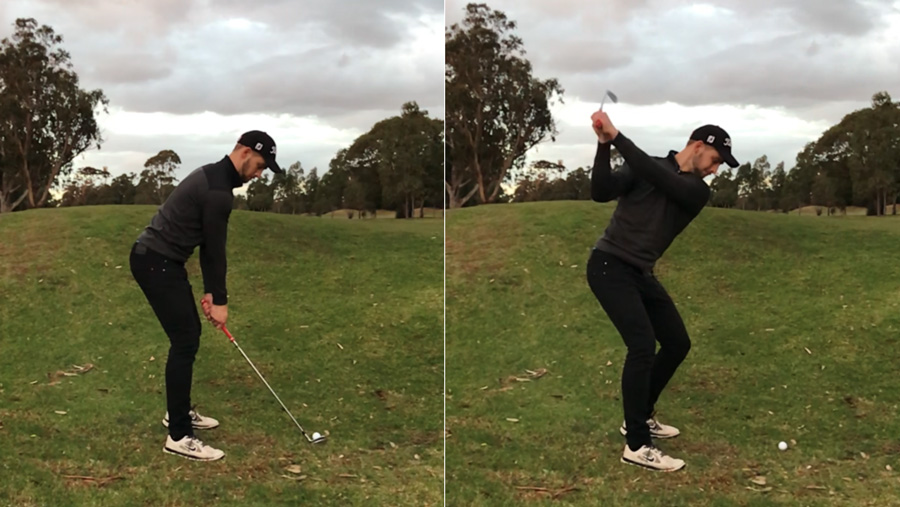By Physiotherapist Jordan Rutherford.
Golf presents a unique opportunity in that players can participate in the sport from a very young age, and long into their retirement years.
Although it is not a contact sport, there a number of common golf-related injuries that can hamper the professional and amateur, social golfer alike. Studies report that the prevalence of injuries among golfers may be as high as 62.5% annually*
Injuries most commonly occur from overuse or from biomechanical or technique errors. Why do these golf injuries occur?
- Overuse injuries are particularly prevalent in golf as in a single round of golf, a golfer may swing the club up to 100 times (and for some of us, even more). The repetitive nature of a golf swing means that particular areas such as the back, shoulders elbows and knees are unevenly loaded unilaterally (on one side).
- Golfers who play and practice regularly such as professionals or lower handicapped golfers are more prone to these sorts of injuries as they would perform a much higher number of swings on average per week.
- And for those that don’t play regularly, poor or incorrect golf swing technique may be a contributing factor.
Lumbar Spine Injuries (Lower Back):
Lower back injuries are the most common golf-related injuries, occurring in around 35-45% of golfers that present to me at Waverley Park Physiotherapy Centre.
In the amateur population is not entirely clear as to whether these lower back golf injuries as a significant portion of the normal population complain of low back injuries outside of golf, so this is always my first level of questioning when a golf player presents with lower back issues at WPPC.
For the amateur golfer some contributing factors to lumbar spine injuries are;
- Poor setup posture
- Reduced lumbar and thoracic spine mobility
- Weak core and glutes
- Rushed or absent warm-up
Lumbar spine injuries can be treated by a physiotherapist with “hands on” treatment. At Waverley Park Physiotherapy we also provide injury prevention advice about your warm up routine and some specific golf stretches and strengthening exercises. For more regular players it is also important that any swing errors be assessed by a golf professional to reduce the likelihood of reoccurring injuries.
In professional golfers, the occurrence of lumbar spine injuries is much higher. This is likely due to the high rotational forces that the spine is subjected to throughout a swing and the high number of swings performed.
Elbow and Wrist Injuries:
Elbow and wrist injuries occur in around 25% of golfers the present at the clinic; and can be caused by a range of swing errors, making elbow and wrist injuries far more common in amateurs than professionals.
These injuries include medial epicondylitis (Golfer’s elbow), lateral epicondylitis (Tennis elbow) and tenosynovitis. Interestingly enough, despite the name, the incidence of lateral epicondylitis (Tennis elbow) is 5 times more common in golfers then Golfer’s elbow*.
Swing errors involve:
- Steep swing path (a common cause of a slice)
- Deep divots which cause rapid deceleration of the club at impact
- An overly tight grip
Shoulder Injuries (Rotator Cuff):
Shoulder injuries usually occur during the back-swing phase, which the shoulder externally rotates to increase range of movement, during impact (for the lead shoulder), or during the follow through at the extreme of internal rotation and horizontal flexion (with the arm across the body).
Common errors include:
- A hunched setup
- Poor day to day posture, particularly for those who work at a desk for much of the day
- Pre-existing shoulder injuries such as osteoarthritis, rotator cuff tears and AC joint pathology
- Poor mobility through the thoracic spine, causing the shoulder to make up for loss of range
As the golf swing involves the whole body, and there are many moving parts involved – it is important to have a trained professional assess your swing or injury to see whether changes can be made to reduce the likelihood of you being injured.
Golf related injury? Contact Jordan Rutherford, member of the physiotherapy team at Waverley Park Physiotherapy Centre, for assessment and treatment of golf related injuries. Let us help get you back out on the course, enjoying your golf, as soon as possible. Call the WPPC reception on 9795 0668.

About Physiotherapist Jordan Rutherford: Jordan, with a strong passion for golf, is a physiotherapist at WPPC (Physioworks Mulgrave) and at the Australian PGA Headquarters at Sandhurst (Melbourne). He previously played golf weekly at a competitive level, (off 6 at his best), but nowdays work commitments means he gets on the course “as much as I can”. He has much empathy and great understanding for golfers with knee injury/issues.
*Sources: Golf-related Injuries: A Systematic Review (2009)
JAN CABRI, JOA˜ O PAULO SOUSA, MAGDALENA KOTS & JOA˜ O BARREIROS







